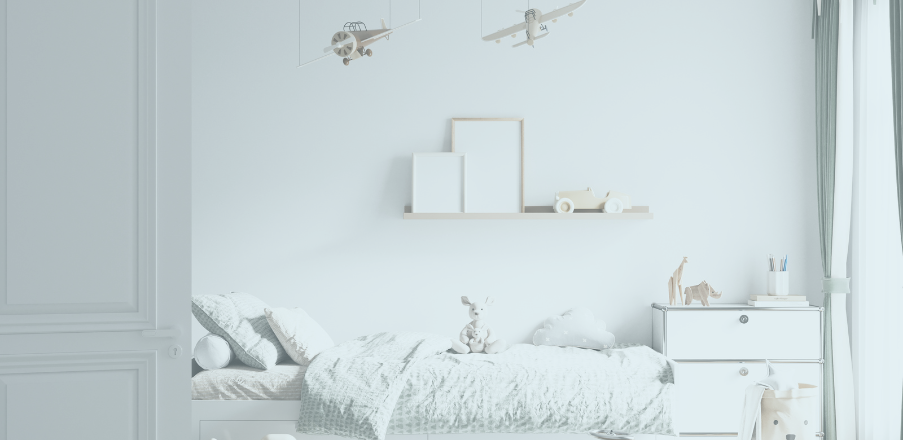The crib days are coming to an end. Your once-snuggly baby is now a full-blown toddler, climbing on everything and maybe even asking for a “big kid bed.” It’s an exciting milestone, but now you’re faced with a surprisingly tricky decision:
Should you go with a twin bed, or jump straight to a full?
This choice isn’t just about mattress size. It affects your child’s comfort, safety, and sleep routine, along with your space and budget. And if you're like many moms, you're trying to find a solution that makes sense for your family, your home, and your long-term needs.
Let’s break down the options so you can make the best decision with confidence. We’ll look at the pros and cons of each size, signs that your child is ready for a new bed, and tips to make the transition easier. You’ll also find helpful stats and expert insights to guide your choice.
Should You Start with Twin or Go Straight to Full?
Start with a twin:
Most families transition from crib to toddler bed or straight to a twin. Toddler beds (about 28″ × 52″) use the same crib mattress, have built-in rails, sit low to the floor, and are ideal when your child is 18 months to toddler years. They offer a gentle step up from the crib without changing too much at once.
Skip toddler and go straight to twin or full:
Many moms now prefer a one-step transition. Going directly to a twin (38″ × 75″) means fewer changes overall. It’s a great middle-ground option that fits most rooms. If you want extra space for cuddles or have a growing child who likes to spread out, some parents opt for a full (54″ × 75″) from the start. A full mattress gives both child and parent room to snuggle, read stories, or co-sleep during bad dreams or illness.
In short:
-
Toddler bed: safe and budget-friendly transitional option
-
Twin: lasts through childhood and fits most bedrooms
-
Full: extra comfort, especially if you spend time in the bed too
When to Know It’s Time for the Next Bed
1. Safety-first signs:
If your child is climbing out of the crib or the side rails are no longer secure, it may be time. Pediatricians recommend transitioning once your child is about 35 inches tall or when the crib rails are below their chest (sleepfoundation.org, verywellfamily.com).
2. Your child expresses readiness:
If your toddler starts asking for a big kid bed, listen. They may be emotionally ready for the change.
3. Outgrowing comfort:
If your child looks cramped or can no longer stretch out in their crib, that’s another sign it’s time to move on.
4. Lifestyle considerations:
If you need the crib for a new sibling or your bedtime routine includes cuddling, a larger bed might make sense.
Pros and Cons of Twin vs. Full Kids’ Beds
Twin Bed (38″ × 75″)
Pros:
-
Fits well in most bedrooms
-
Easier to find bedding and accessories
-
More affordable than a full
-
Enough room for small snuggles or stories
Cons:
-
Less space for cuddling with a parent
-
May feel small if your child moves a lot during sleep
-
Requires a second upgrade later if your child outgrows it
Full Bed (54″ × 75″)
Pros:
-
More room for both child and parent
-
Comfortable for storytime or nighttime soothing
-
Can last into teen years and beyond
-
Good for co-sleeping during illness
Cons:
-
Higher cost for mattress, frame, and bedding
-
Takes up more floor space
-
Can feel overwhelming for a small toddler
What the Research Says
According to the American Academy of Pediatrics, children should move out of a crib when they show signs of climbing or once the crib becomes unsafe. Most children transition between 18 months and 3 years of age according to sleepfoundation.org.
A 2019 study published in the journal Sleep Health found that consistent bedtime routines lead to better sleep quality, improved language development, and fewer behavioral problems. In fact, over 80 percent of parents with children under five follow a set bedtime routine.
These routines can continue seamlessly in a new bed as long as the transition is handled gently.
Tips to Make the Transition Easier
-
Talk it up: Make it exciting with a countdown or special bedding.
-
Test the waters: Start with naps before full nights.
-
Stick to your routine: Keep familiar elements like books, baths, and bedtime songs.
-
Add safety features: Use side rails and keep the mattress low to the ground if needed.
-
Celebrate milestones: Praise your child for staying in bed or sleeping through the night.
Final Thoughts
Choosing between a twin and full bed is a personal decision that depends on your child’s needs and your family’s lifestyle. If space and budget are concerns, a twin bed may be perfect. If comfort, longevity, and nightly snuggles are priorities, a full bed might be the better fit.
No matter which size you choose, your child will benefit most from a safe, supportive sleep environment and the loving bedtime routine you create.
Here’s to sweet dreams and smooth transitions ahead!

